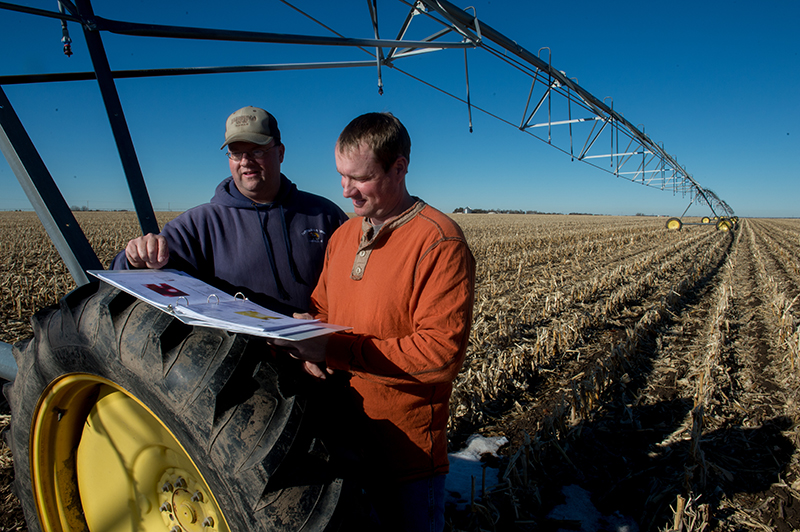Science: The Secret Link in the Fertilizer Value Chain
The Fertilizer Institute has compiled research results on the impact of implementing the principles of 4R Nutrient Research. Get the latest online!
When most people think about fertilizer (if they even think about fertilizer), they probably imagine lush green lawns, mulch, tractors spraying fields, and quite possibly even manure.
Science never even enters that picture. However, the truth is, without science agriculture wouldn’t be as productive as it is today. Technological advances have allowed us to produce the modern fertilizers that are responsible for 50 percent of the food grown in the world today.

TFI – 4R Winners – Brian Herbeck
The Haber-Bosch process gave us the ability to produce ammonia nitrogen fertilizers. New seed varieties help us grow crops that use nutrients more efficiently. And today, science is helping the fertilizer industry understand how to apply nutrients in the most sustainable way, ensuring outcomes that are economically and environmentally positive.
Sustainable fertilizer use is all about making sure that nutrients that are applied are used to grow crops and are not lost to the environment. That’s taking place. When compared to 1980, U.S. farmers have more than doubled corn production while using just 6.9 percent more fertilizer. Looking from a different angle, farmers today are using 42 percent less nitrogen, 59 percent less phosphorus, and 63 percent less potassium to produce a bushel of corn than they were 37 years ago.
The fertilizer industry is a solution seeker. We believe that scientific research is essential to ensuring that farmers have the information and tools necessary to feed a growing population sustainably. We also partner with NGOs such as The Nature Conservancy to educate farmers and stakeholders about sustainable farming with 4R Nutrient Stewardship (use of the right source of fertilizer at the right rate, the right time and in the right place).
The industry does more than talk about research. Eighty-four fertilizer companies have contributed $5.7 million to the 4R Research Fund that to date supports 12 projects in the United States and 13 in Canada. Additionally, with assistance from our researchers, we’ve doubled the 4R research funds to $11 million with 1:1 leveraging from other public and private institutions.
This science for 4R stewardship is providing the science needed to use fertilizers in a sustainable manner – remaining profitable while protecting the environment and benefiting society. While funded projects are ongoing, The Fertilizer Institute has begun to aggregate results. And we’re starting to learn more about how suites of 4R practices are having an effect on the movement of nutrients. You can learn more about this research from various articles TFI has published in the Certified Crop Advisers Crops and Soils Magazine.